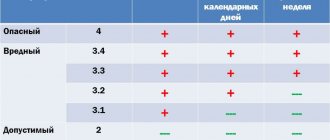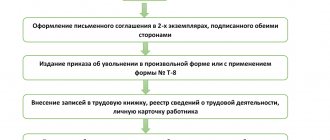Recently, the topic of personnel assessment in enterprises, especially those with large staff, has become increasingly popular. Until the early 2000s, the labor market in our country still had some Soviet features, and the concept of “Human resource management” was something not fully understood. Over time, however, employees have become as valuable a resource as facility or equipment, although some form of employee evaluation existed in a minority of companies until the mid-2010s.
Fig. 1 Personnel management model
The essence of the method
A 360-degree evaluation is a good way to give an employee feedback from everyone they interact with on the job. This is the manager, colleagues, subordinates, in some cases even clients. Under conditions of complete anonymity, they answer questions related to those qualities of the person being assessed that are important in his work. For example, initiative, ability to work in a team, responsibility.
The goal is to help the employee correlate his professional self-esteem with the assessment of others, to see his weak and strong points, problems and opportunities. Having done this, a person will be able to confidently apply developed competencies and “pull up” weak ones. For this purpose, based on the results of the assessment, an individual development plan is drawn up.
Problems that assessment will help solve
Plan employee training
Having identified the level of development of a person’s competencies, it will be possible to determine which courses or seminars to send him to, whether he needs a mentor within the company, etc.
Increase employee efficiency by increasing his self-awareness
By learning more about their strengths and weaknesses, an employee will be able to act more effectively. Perhaps others value some of his qualities much higher than he does himself. Having learned about this, he will be more confident in using them.
Selection for the project team, new branch, personnel reserve
The 360-degree method is a good way to gain insight not only into the individual's specific qualities, but also into how they interact with people within the team. But keep in mind that for selection into the personnel reserve or work on a complex project, one 360 Assessment will not be enough. In addition to competencies, it is important to evaluate hard skills, that is, professional skills and abilities specific to the field and position.
Give the manager a realistic idea of the employee
A comprehensive look at the subordinate’s competencies will make the manager’s opinion of him more objective. This means it will help improve the quality of management and work efficiency. The result will be especially noticeable in extreme cases: if the employee was unfairly picked on or, on the contrary, he “played favorites.”
Example of a questionnaire
Let's try to test ourselves and highlight:
- competencies that are tested by this survey;
- questions that relate to the sincerity scale;
- flip questions;
- questions (there may be 2 or more of them), the discrepancy in answers to which should not be more than 1 point (example of duplicate questions).
Questions with reverse scaling are in italics (with average scores of level 4-5 in the rest of the answers here, adequate answers should be 1-2 points; if the answers are 4-5 points in two cases or more, the validity is considered low).










